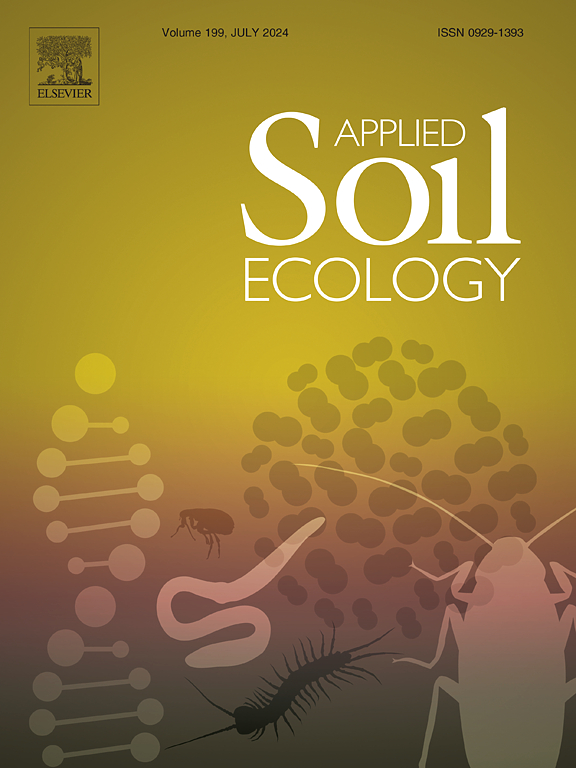Tobacco black shank disease significantly affects the composition and assembly of the genotype-associated microbial community in the rhizosphere
IF 4.8
2区 农林科学
Q1 SOIL SCIENCE
引用次数: 0
Abstract
Tobacco black shank (TBS) disease is a soil-borne disease, and it is associated with the microbial community in the rhizosphere. However, the influence of tobacco genotype and TBS disease on the rhizospheric microbiome remains unknown. In this study, we investigated the severity of TBS disease, and characterized the rhizospheric bacterial and fungal community compositions of four tobacco varieties, including ZC208, YY87, YY85 and HD. The results showed that TBS disease drove the transformation of microorganisms from bacteria-dominated to fungi-dominated, and TBS disease increased the prevalence of beneficial microbiomes in the tobacco rhizosphere. Moreover, the influence of TBS disease on the rhizospheric microorganisms of resistant tobacco was lower than that on susceptible tobacco. Specifically, our findings suggested Taibaiella, Gemmatimonas, Rhodopirellula, Terrimonas and Lysobacter potential suppression roles of TBS disease, and Ensifer and Methanobacterium may play promoting roles in TBS disease progression. Our findings enhance the understanding of the microbial-mediated mechanism of TBS disease and provide novel insight for developing underlying microbial antagonists to manage soil-borne diseases.
求助全文
约1分钟内获得全文
求助全文
来源期刊

Applied Soil Ecology
农林科学-土壤科学
CiteScore
9.70
自引率
4.20%
发文量
363
审稿时长
5.3 months
期刊介绍:
Applied Soil Ecology addresses the role of soil organisms and their interactions in relation to: sustainability and productivity, nutrient cycling and other soil processes, the maintenance of soil functions, the impact of human activities on soil ecosystems and bio(techno)logical control of soil-inhabiting pests, diseases and weeds.
 求助内容:
求助内容: 应助结果提醒方式:
应助结果提醒方式:


